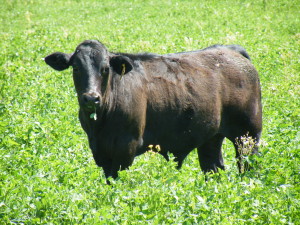Late September-early October is the ideal time for planting cool season annual forages such as annual ryegrass, small grains (rye, wheat or oats) and/or cool season annual legumes. Anytime we are incorporating new forages into our production systems it is important to make sure to match the forage species to your location (soil type, average annual rainfall, intended use, etc). If you have questions about forages appropriate for your area contact your local county extension agent.
Three methods for establishing cool-season annual grasses include planting into a prepared seedbed, the light disking method and over-seeding or sod-seeding into undisturbed soil. For more information on establishment, fertilization and utilization: Establishing Cool-Season Annual Grasses
Over-seeding warm-season perennial grasses with cool-season legumes offers several benefits:
1. Grazing can begin 4 to 6 weeks earlier grazing in the spring, which reduces the winter feeding period.
2. Legumes typically have higher nutritive value than do most grasses.
3. Legumes fix nitrogen from the atmosphere and make it available to the pasture system.
4. A good stand of legumes can help control spring weeds by competing for space, water, sunlight and nutrients. 
For more information on establishment and utilization of cool-season annual legumes: Cool-Season Forage Legume Management Guide
Vanessa Corriher-Olson, Ph.D.
Forage Extension Specialist
Soil & Crop Sciences
Overton, TX
Texas A&M AgriLife Extension Service
Texas A&M University System